Landing Lights & Antenna
The lower left picture is the landing light. It
is a 1964 Corvair high beam, draws 35 watts at 12 volts, and weighs
10 ounces with it's mounting cup. It is attached to the main spar,
and points down at an angle through the lower surface. The cover
is 1/16" Lexan, screwed to two lightweight aluminum angles
rivited to two false ribs. A thin curve of aluminum is rivited
to the leading edge, and the Lexan snugs under it along it's front
edge. One landing light in each wing gives enough light to judge
the landing flare, adds 2 pounds of weight total, and probably
no drag.
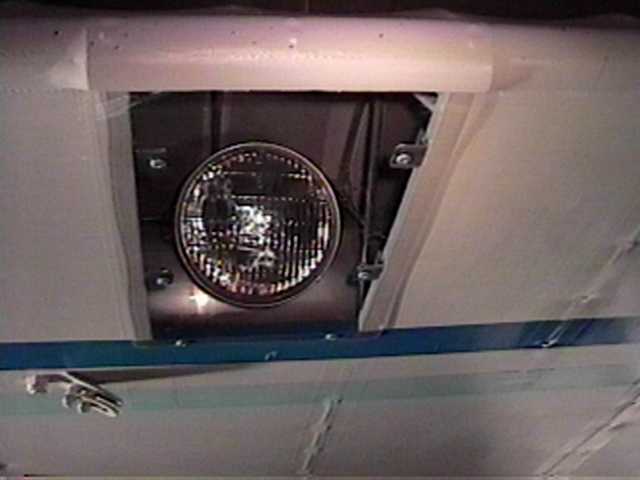
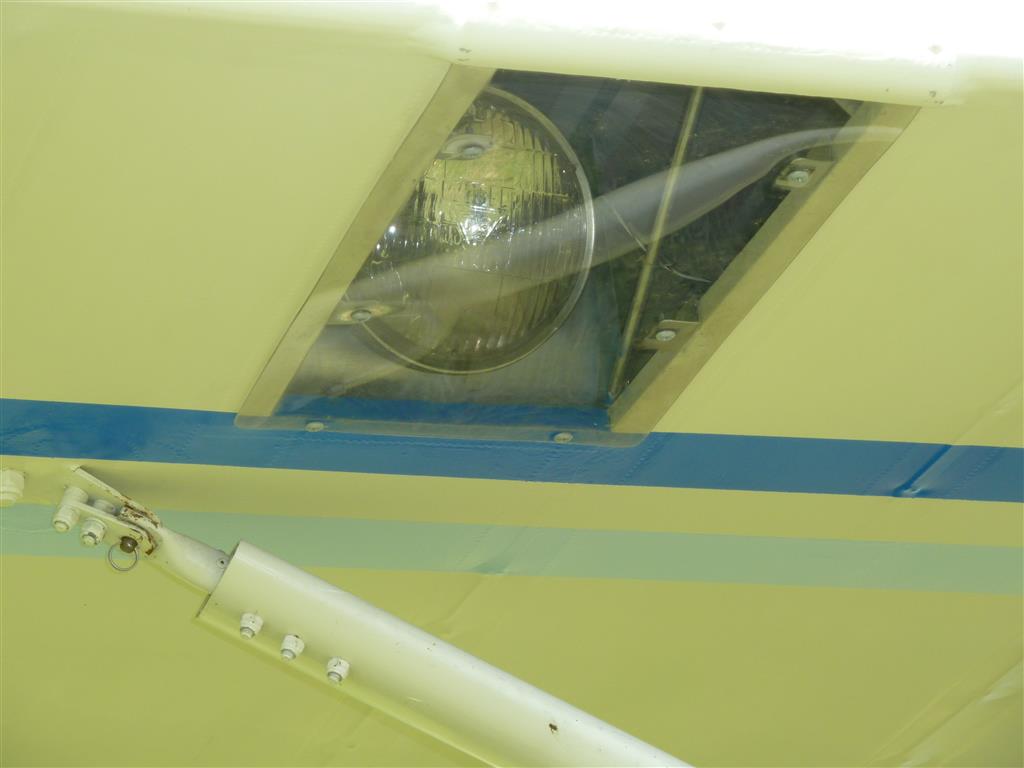

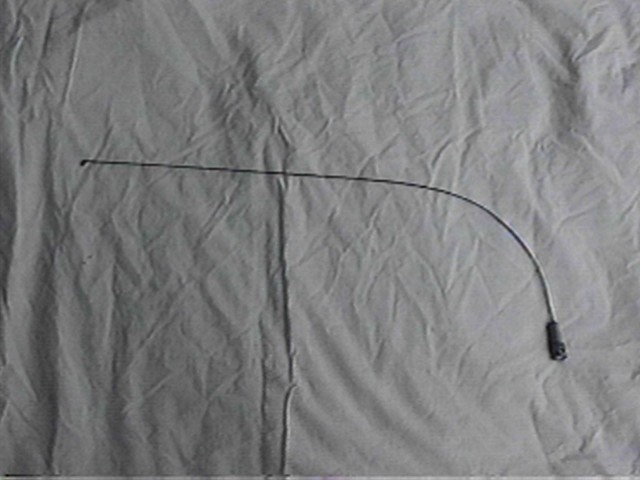
People ask: "Where do you put the antenna, and how
long should it be?" This is where and how it was for years,
check the update below for an improvement. The antenna is 24 1/4"
long from the end of the BNC connector to the little rounded curl
on it's end. There is a sheet of aluminum glued to the inside
fabric of the airplane between the lower left longeron and the
main tube, and it has a jack-to-jack BNC bulkhead pass-through
screwed into the middle of it. Your antenna cable attaches to
the inside end, and the antenna to the outside end. I grounded
the aluminum sheet to the airplane, although I have been told
that this is not necessary.
The antenna is made by taking a Radio Shack twist-on male
BNC connector, part # 278-103 and a length of 1/16" model
airplane pushrod steel wire, and combining them like this: take
one end of the steel wire, and taper it on a grinder until it
will fit into the connector until the end just pokes through the
end of the middle terminal connector. Solder it to the connector
at that end. Fill the shank up with epoxy, and after it hardens,
cut it to about 25 inches total length, and trim it to final length
while checking an SWR meter. If you don't have an SWR meter, make
it 24 1/4" long total length, ground plane to tip, it will
work. Put a little curl on the end, or Murphy's Law says someone
will poke it through their eye. Cost? $8. Weight? 2 ounces. Paint
the wire or it will rust.
Update
Had a friend who could never seem to be able to
hear me or communicate well so this winter I did some serious
radio upgrading, and the results were better than I ever expected.
First, I isolated the power input for the radio away from all
the other electrical everything. There is now a power cord with
ground that runs straight from the battery shut-off to the radio.
Now about that battery:
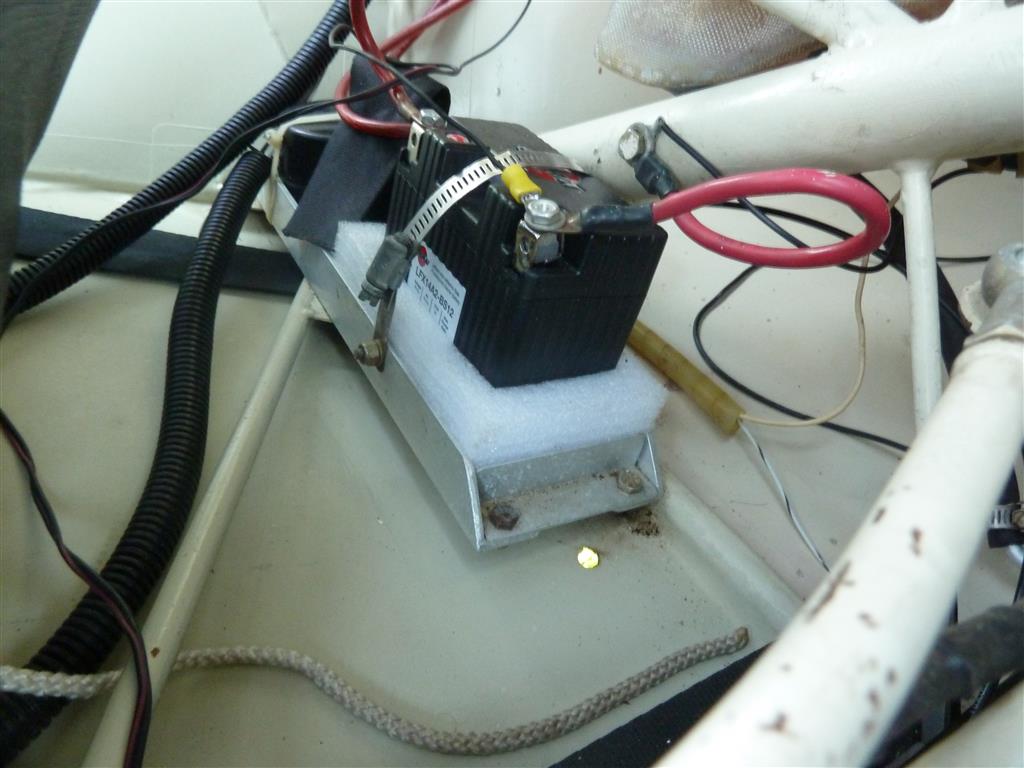 It is a Shorai Lithium Iron battery, 14 Amp Hour,
210 CCA, and weighs 1.5 pounds.
1.5 pounds - WOOHOO!
And it spins the 582 over very smartly, and for as many times
as it takes to get it started!!
It comes with dense foam to take up the space of
whatever battery you remove. I love it, but if you ever totally
discharge it, you might as well throw it away, so I now have a
master battery shut-off switch next to it, and I cut it off every
time I park the airplane, so there won't be any inadvertent discharge.
Moved the antenna location to the vertical fin.
Same antenna as above, just took the bend out of it. Went for
a test flight, called TRI approach, asked for a radio check. "5X5"
was the reply. The reception at my end was MUCH better. WAY much
better. At least twice as good as before. Combined with
a new GCA ANR headset, it is the best it's ever been. This is
the spot.
It is a Shorai Lithium Iron battery, 14 Amp Hour,
210 CCA, and weighs 1.5 pounds.
1.5 pounds - WOOHOO!
And it spins the 582 over very smartly, and for as many times
as it takes to get it started!!
It comes with dense foam to take up the space of
whatever battery you remove. I love it, but if you ever totally
discharge it, you might as well throw it away, so I now have a
master battery shut-off switch next to it, and I cut it off every
time I park the airplane, so there won't be any inadvertent discharge.
Moved the antenna location to the vertical fin.
Same antenna as above, just took the bend out of it. Went for
a test flight, called TRI approach, asked for a radio check. "5X5"
was the reply. The reception at my end was MUCH better. WAY much
better. At least twice as good as before. Combined with
a new GCA ANR headset, it is the best it's ever been. This is
the spot.
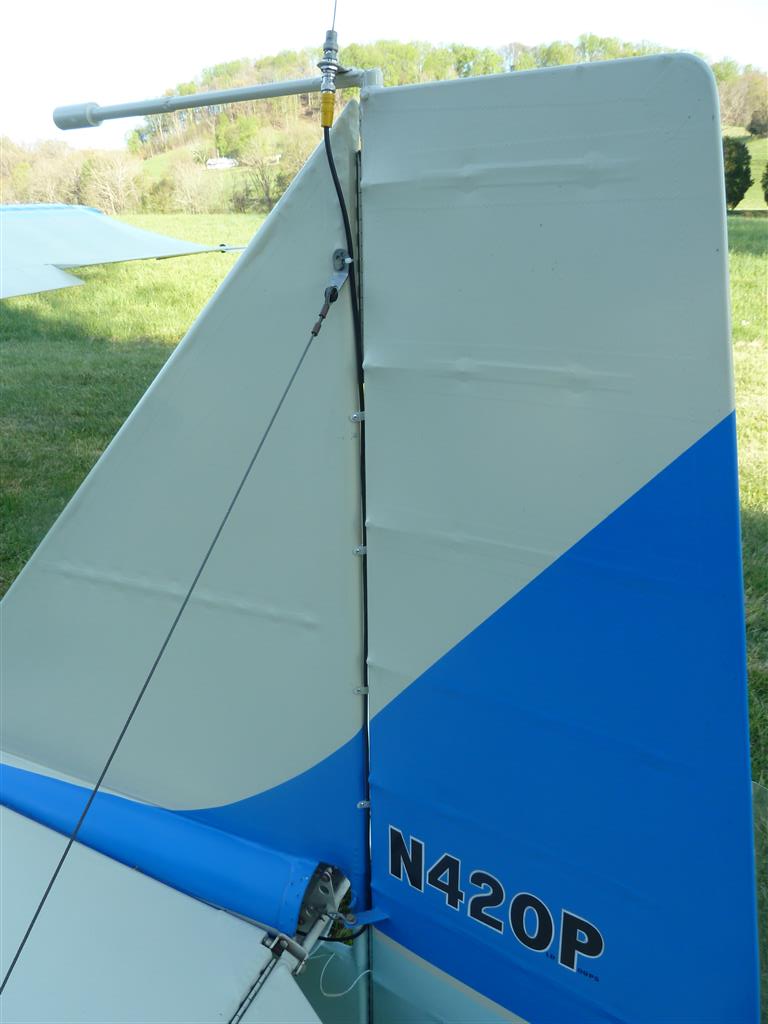
Thus Endeth the Tweaks & Hints Section
If you're thinking about buying a MKIII, and want
an unbiased opinion, you are on the wrong page. I think the MKIII
is the best little two seat airplane that an old guy on a fixed
income could buy. Since 1965 I have owned 3 airplanes and 7 ultralights,
and the Kolb is the most satisfying of any of them. Hope you like
yours as well. Fly safe.
Richard Pike
For more Kolb information, you might
want to try subscribing to the Kolb list:
MKIII N420P (4 2 OldPoops)
|
For feedback, questions, etc: email
thegreybaron at charter.net
(in honor of Bob Noyer - the real Grey Baron)
|
 |
The
Kolb Aircraft Company |






